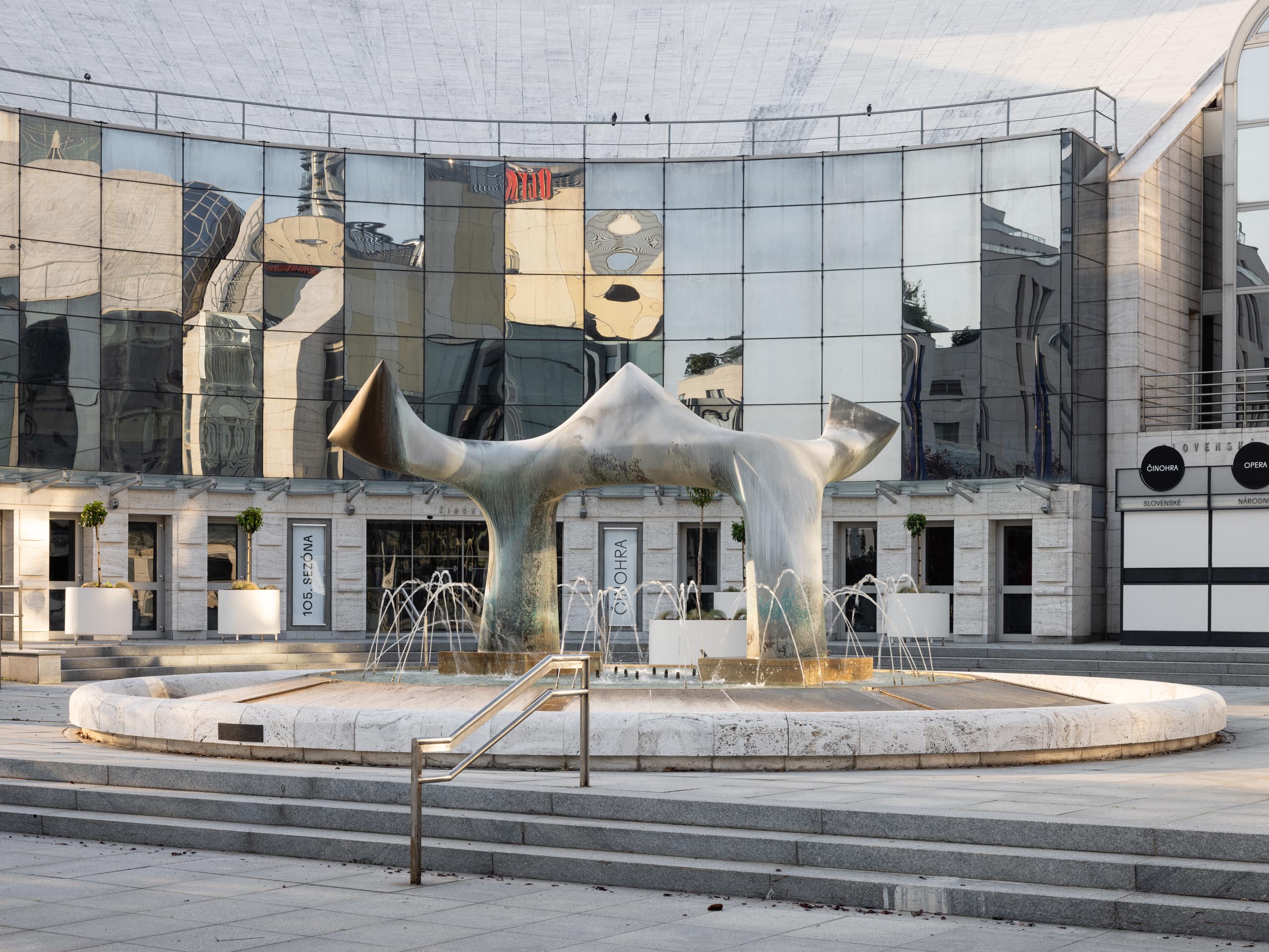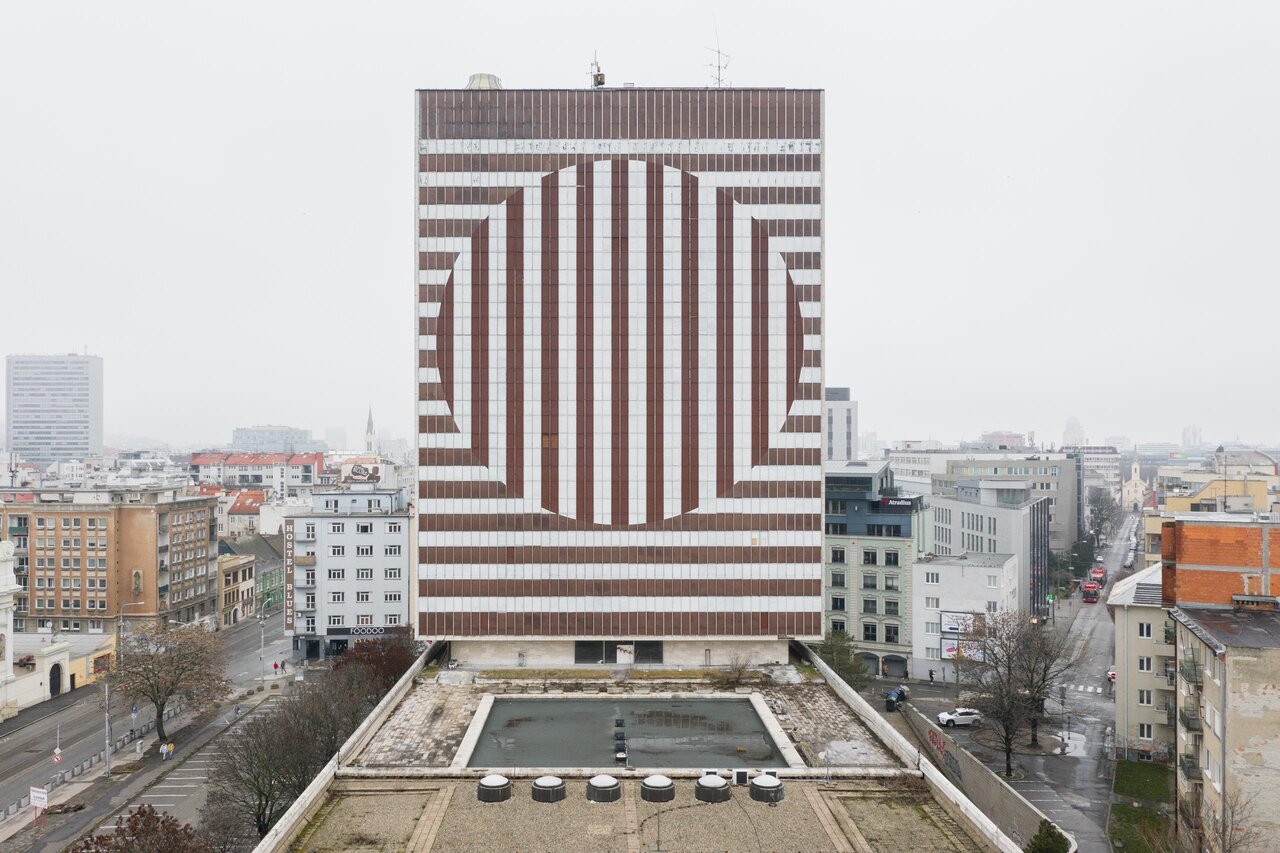General Milan Rastislav Štefánik (1880–1919) is one of the most important personalities of modern Slovak and Czechoslovak history. In addition to his fundamental political, diplomatic, and organisational contribution to the establishment of the first united Slovak and Czech state, Štefánik is remembered as an internationally renowned scientist, astronomer, aviator, photographer, and inventor. Following his tragic death, several memorial works were created to honour his legacy, some shortly after the tragedy, others years, even decades, later. Primary among these are the commemorative mound on Bradlo Hill (1924–1928) and a smaller memorial mound in Ivanka pri Dunaji (1923), built on the site of a lesser monument from 1921. Both are works of the prominent Slovak architect Dušan Jurkovič. The monument to M. R. Štefánik erected in Bratislava was not completed until 1938, a delay that marked its fate and led to gradual removal of the work.
The Bratislava monument was originally erected on today's Ľudovít Štúr Square in the Old Town beside the Danube embankment. The monument’s concept and sculptural element were the work of Štefánik's friend Bohumil Kafka, a prominent Czech sculptor. Kafka collaborated with Jaroslav Jareš, a versatile artist who, among other achievements, co-created the national flag and national emblem of the first Czechoslovak Republic of 1918. Architecturally, the monument comprised two massive pillars faced with white stone. According to some sources, the architecture of the monument was designed by Vojtěch Šebor, but further research is required to check this assertion. Mounted on the shorter pillar in the foreground was a statue of Štefánik wearing a flight suit and an aviation helmet with goggles. In his right hand he held a scroll referencing the Pittsburgh Agreement or, in a broader sense, the various treaties and documents that led to establishment of the first Czechoslovak Republic. On the taller pillar stood a statue of a lion, symbolising the Czechoslovak Legions of the First World War and their significant contribution to the founding of Czechoslovakia. Both statues were cast by Anýž, a renowned Czechoslovak company whose works can still be found in several regions across Bratislava. In 1940, two years after completion of the monument, the fascist regime of the Slovak State had the statue of the lion removed due to its evocation of the Czechoslovak Legions. In 1954, the communist regime objected to the monument even in its reduced form; the statue of Štefánik was melted down and the rest was demolished. Following complete removal of the work, an island with a flowerbed was built in its place. Subsequently, in 1972–1973, the massive Ľudovít Štúr Monument was installed on the site and remains there to this day. It was designed by the sculptor Tibor Bartfay and architect Ivan Salay, winners of the art-architectural competition for the work.
The monument to M. R. Štefánik remained in the memory of Bratislava residents for decades after its barbaric removal, but it was only after 2000 that any possibility of its return became realistic. Although the statue of Štefánik was destroyed, smaller models and casts survived, as did various contemporary documentation. A reduced bronze cast from 1936 of height 49.5 cm is held in the Bratislava City Gallery collection. The Danube embankment beside the multifunctional complex Eurovea was chosen as the new site for the monument; the local Ružinov council later approved naming the area Milan Rastislav Štefánik Square. The foundation stone was laid in 2004, and the monument was unveiled on 4 May 2009. Its creators were the sculptors Gotthard Janda and Jan Janda, who modelled the statue in its original form. Architect Pavol Kopačka adapted the shape and dimensions of the monument to suit its new environment. The monument is set on a perpendicular axis between the Eurovea building and the Danube embankment. Although initially the recreated work may look identical to the original, its current form does feature differences. To preserve the waterfront silhouette, the pillar with the bronze lion is almost 7 metres shorter than the original, and placement of the monument on the new massive pedestal is changed. A new bronze plaque with the text of the Pittsburgh Agreement signed on 30 May 1918 has been placed on the back of the pillar. The sides bear boards dedicated to the new installation; in addition to the M. R. Štefánik Foundation, they show details of persons, companies, and donors who contributed to its recreation through financial support, organisation, or implementation. Among the listing is DSB EURO Blansko (renamed Ernst Leopold s. r. o. in 2016), the oldest Czech foundry company, which re-cast the bronze statues. The original Anýž foundry, renamed n. p. ZUKOV following nationalisation, dissolved without replacement in 1991.
After many decades, recreation and re-erection of the monument symbolically paid a debt owed to M. R. Štefánik, as well as to the sculptor Bohumil Kafka and his colleagues. Although the work does not stand on its original site, it does rest on the embankment as it once did, and M. R. Štefánik gazes out towards the Danube. It should be noted, however, that unlike in its original location in the public space, it is now sited on private commercial land and close to commercial buildings. In practice, this means that various commercial and promotional events often take place near the monument, even longer-term actions such as cars being advertised on metal stands placed diagonally at its base. Also problematic are Christmas market stalls operating alongside the monument, their rustic nature and decorative seasonal lighting conflicting with the elegance of the work (besides not harmonising with the surrounding modern buildings of Eurovea and the new Slovak National Theatre).
Placement of the monument on the axis from the Slovak National Theatre to the Danube is also questionable. The space was intended to symbolise a watercourse with several thematic artworks, but the proposed design was never completed. From the space in front of the theatre, one can no longer view the Danube and its Petržalka bank (Lido) where, according to earlier studies by the BKPŠ studio, a tall parabolic arch was to be placed as a symbolic gateway to Petržalka. It was to be reminiscent in shape of the architect Eero Saarinen’s iconic work Gateway Arch, built in 1963 on the banks of the Mississippi River in St. Louis (USA). Instead, the idea of a visual ‘aerial’ connection between the two waterfronts is now emerging from the opposite bank – approval of Amendment No. 10 to the zoning plan concerns projects for the construction of the New Lido, and one aim is to build a pedestrian bridge across the Danube between Petržalka and the embankment near Eurovea. This would place the monument to M. R. Štefánik in a different compositional and spatial context. Although it is currently only a proposal, it is a good opportunity to discuss the boundaries between public, semi-public, and private spaces in the city, how best to proceed with the installation of new works, and how best to manage the care and potential relocations of existing works. Rebuilding the monument to M. R. Štefánik can certainly be considered a positive act, but placing advertising and commercial elements in its proximity cannot. Architect Branislav Kaliský’s redesign of a long stretch of the embankment near the Eurovea complex is a prime example of how to bring the river closer to the public, literally to within touching distance. However, it should not be forgotten that this space, although freely accessible, is private not public – and the current form of the monument to Štefánik has been adapted accordingly.
ZD
Research status as of 22 February 2023.



